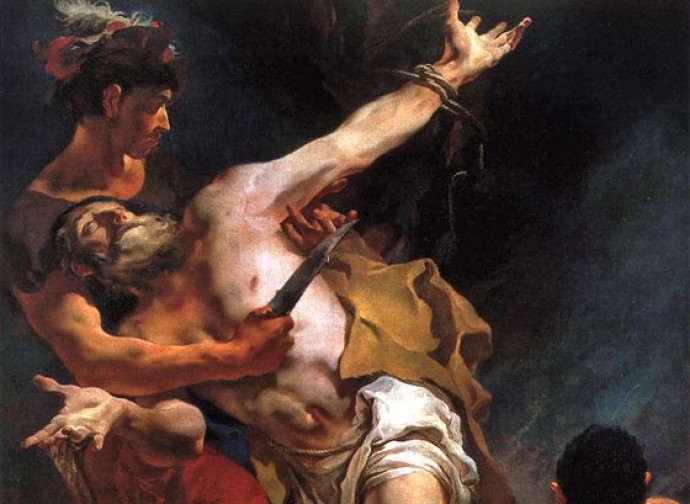Saint Bartholomew
The Synoptic Gospels call him by his patronymic and simply mention him in the lists of the Twelve. The evangelist John instead offers us a fascinating insight into his person.

The Church commemorates with a liturgical feast the Apostle Saint Bartholomew, whom the Gospels present to us with a double name. The Synoptic Gospels call him by his patronymic (derived from the Aramaic bar Talmay, which stands for “son of Talmay”) and simply mention him in the lists of the Twelve (Mt 10:3; Mk 3:18; Lk 6:14). The evangelist John instead offers us a fascinating insight into his person, calling Bartholomew with what tradition has identified as his proper name: Nathanael, in Hebrew “God has given” or also “God's gift”.
The Gospel written by the beloved disciple introduces Nathanael in the first chapter (John 1:43-51), the richest in "behind the scenes" information on Jesus' first encounters with some of the apostles. It was Philip who was the first to share with his friend the joy of that encounter that marked him deeply, to the point of making him certain that the Messiah announced by the Prophets is concealed in the person of the carpenter of Nazareth. “Can anything good ever come from Nazareth?” answers Nathanael, originally from nearby Cana (John 21:2) and probably a connoisseur of the Scriptures, which indicated Bethlehem as the birthplace of the Messiah. He could not yet know the whole story... but Philip, who had already seen, replied significantly: “Come and see”. Shortly afterwards that man who at first sight seems harsh would receive from Our Lord, in the act of going to meet Him, one of the greatest praises conveyed by the Gospel texts: “Behold indeed an Israelite in whom there is no falsehood”.
In a flash, at his understandable astonishment (“how do you know me?”), comes the second revelation of Jesus: “Before Philip called you, I saw you when you were under the fig tree”. Only heaven knows what Jesus saw in those moments in his future apostle and what thoughts were harboured in Bartholomew's soul, but it must have been something so humanly unfathomable that the initially sceptical Bartholomew broke out in an open and very high profession of faith: “Rabbi, you are the Son of God, you are the king of Israel!”. The God made man, the Incarnate Truth is soon recognized by the Israelite “in whom there is no falsehood”. A moment later Jesus assures him: “[...] You will see greater things than these!”.
He probably saw the first of the great signs three days later at the wedding at Cana, where Jesus was invited with his disciples. After the descent of the Holy Spirit at Pentecost, the New Testament gives us no more information about Bartholomew, but certainly with his apostolate he followed the Lord's final command (“Go into all the world and preach the gospel”). Tradition attributes several missionary journeys to him. He preached in Lycaonia, then crossed the Middle East and, as the historian Rufinus of Aquileia (345-411) writes, reached the western part of the Indian subcontinent. According to the tradition reported by Eusebius of Caesarea (c. 265-340) in his Church History and then by Saint Jerome, Bartholomew left the Indians a manuscript with the Gospel of Matthew “in the writing of the Jews”, which was still intact a century later when Saint Pantaenus (†200) arrived in the Christian community of India.
Besides that it is known that the Apostle's last mission took place in Armenia. Here he continued to preach and perform miracles in the name of Christ, destroyed idols and converted many people. Thus he aroused the wrath of the pagan priests who managed to incite Astyages, the king's brother, against him. He was beheaded after being flayed alive. This tradition has inspired many artists, including Michelangelo, who in the Last Judgement in the Sistine Chapel represented Saint Bartholomew in the act of holding his skin with his left hand (on which it is believed that the artist painted his self-portrait). With regard to the complex story of his relics, we know that a good part of them are kept in the Basilica of St Bartholomew in Benevento, where over the centuries four investigations have been carried out. Some bone fragments are found in the co-cathedral basilica of Lipari.
Patron saint of: Armenia; shoemakers, leather merchants and tanners, farmers, painters, butchers, bookbinders; invoked against skin diseases.




